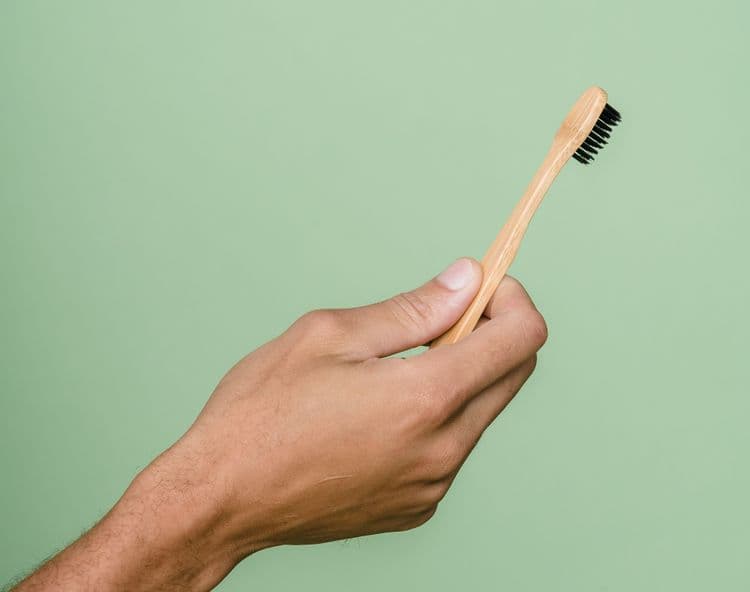Nutrition and Oral Health: How to Eat for a Healthy Smile

What you eat and drink significantly influences your oral health and can affect the development and progression of oral issues and conditions such as cavities, periodontal disease, halitosis (bad breath), and enamel erosion. The correlation between diet and nutrition, and oral health is bidirectional. What you eat affects the health of the hard and soft tissues in your mouth, and the health of your mouth affects your functional ability to eat.[1] There is also an evidential association between oral health and self-confidence and overall quality of life.[2]
Aside from the general recommended oral hygiene and lifestyle habits such as brushing at least twice a day, flossing, bi-annual professional cleanings, not smoking, and limiting sugar intake, other factors such as your saliva pH and the types of micro and macronutrients you consume greatly affect your oral and systemic health.
Why Saliva pH Matters
In the human body, every organ system relies on pH balance to function in a state of homeostasis. In a healthy state, your body pH should be around 7.4, which is slightly alkaline. [3] Saliva in the oral cavity has a normal pH range of 6.7 to 7.3. It is responsible for eliminating carbohydrates that could be metabolized by bacteria and neutralizing acidity from drinks, food, and bacteria.[4] When our saliva is too acidic, we become more susceptible to problems such as tooth demineralization, dental decay, halitosis, and periodontitis. This acidic state is called chronic acidemia and can lead to many systemic diseases, including cardiovascular disease.
Like your gut and skin, your mouth has a unique microbial community. A balanced oral microbiome is essential for maintaining oral health, and low salivary pH (too acidic) can lead to perturbance of the function and composition of the oral microbiome, causing dysbiosis and a higher risk of oral issues.[5]
How to neutralize your diet for oral health
Just because a food is considered acidic doesn’t necessarily mean that it is unhealthy or should be avoided entirely. A healthy diet is all about balance. Tomatoes, bell peppers, citrus, and berries are all considered acidic but have their own inherent benefits to our health. On the other hand, soda is highly acidic (and high in refined sugar) and should be eliminated or, at the very least limited in your diet as it has no nutritional value. Sugars, specifically, are the biggest driver of cavity development.[1]
The good news is that there are plenty of foods that are nutrient-dense and neutralizing—a winning combination when eating for oral and whole health.
5 Vitamins and Minerals Your Mouth Needs
Calcium
Calcium is well-known for its bone health-supporting functions. But this vital mineral is also important for the health of your teeth, which are similar to but not actually bone. Enamel, the outer layer of your teeth and the hardest substance in your body, depends on calcium to help keep it strong and to protect the more vulnerable layers underneath.* Your jaw, however, is made of bone and relies on sufficient calcium levels for its structural integrity.
While milk-based foods like yogurt and cheese are calcium-rich, there are plenty of plant-based options, such as broccoli, lentils, peas, beans, seeds, and dark leafy greens.
Vitamin D
Vitamin D is essential for calcium absorption and supporting bone mineral density.* Your body naturally makes vitamin D when exposed to sunlight, but it can also be found in mushrooms, fortified milk, tofu, and fatty fish.
Phosphorous
Phosphorous is also an important mineral that helps the body absorb and use calcium. It helps strengthens teeth and is necessary to rebuild tooth enamel.* Incorporate foods like eggs, legumes, sunflower seeds, yogurt, cottage cheese, Brazil nuts, and whole grains into your diet for a sufficient supply of phosphorous.
Vitamin A
Vitamin A is essential for immune function and supports saliva production and mucus membrane health.* Dry mouth, a result of low saliva production, increases your risk of tooth decay and bad breath. Foods like eggs, carrots, and sweet potatoes are high in vitamin A.
Vitamin C
Vitamin C helps keep the connective tissue in your gums strong and healthy, which supports keeping your teeth in place.* Vitamin C deficiencies have been linked to bleeding gums and gum disease. Vitamin C-rich foods include broccoli, kale, sweet potatoes, and citrus.[6]
And Don’t Forget to Drink to Your Health
Water is the best beverage you can drink for your oral health and whole health. It is pH neutral, sugar-free, dilutes acids, supports healthy saliva production, helps fight morning breath, and rinses away leftover food residue that cavity-causing bacteria love. Now that is something to cheers to!
Resources:
- Nutrition and oral health . American Dental Association. (n.d.). Retrieved June 27, 2022, from ada.org.
- Gondivkar, S. M., Gadbail, A. R., Gondivkar, R. S., Sarode, S. C., Sarode, G. S., Patil, S., & Awan, K. H. (2018). Nutrition and oral health . Disease-a-Month. sciencedirect.com.
- Hopkins, E., Sharma, S., & Sanvictores, T. (2022). National Center for Biotechnology Information . PubMed.
- Baliga, S., Muglikar, S., & Kale, R. (2013, July). Journal of Indian Society of Periodontology . PubMed Central.
- Pedersen, A. M. L., & Belstrøm, D. (2019). Journal of Dentistry . sciencedirect.com.
- 5 essential vitamins for teeth and Gum Health. (Updated 2023). Retrieved June 27, 2022 from colgate.com.

